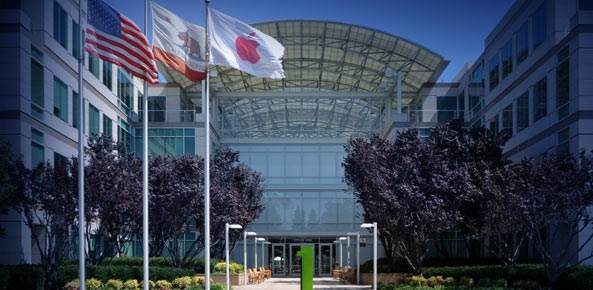
After stumbling in 2016, Apple is betting on a better year ahead. The Silicon Valley tech giant is forecasting a return to growth in iPhone sales this winter, after a rare slump that dropped a wet blanket on Apple’s revenue and stock performance over the last three quarters.
The company is also set to unveil new Mac computers later this week, hoping to boost lagging interest in a set of products that are symbolically significant even if they’re less financially important to the company than the iPhone.
Apple has been struggling with shrinking demand for its signature products at a time when analysts say it’s increasingly difficult for tech companies to come up with dramatically new features. Many consumers are holding onto their old smartphones and PCs for longer, seeing little reason to buy a new model that’s only slightly better.
One consequence: Apple sold 45.5 million iPhones in the quarter that ended in September. That was slightly more than the 45 million that Wall Street expected, but still 5 percent fewer than the 48 million iPhones it sold in the same period a year earlier.
Renewed Interest in iPhones
Still, analysts say consumers are showing renewed interest in Apple’s latest iPhone models. Based on early sales, Apple Chief Financial Officer Luca Maestri told The Associated Press, “We feel very good about the momentum of the 7 and 7 Plus.”
The 7 and 7 Plus models aren’t a radical change from the iPhone 6 and 6 Plus, which were wildly popular when they were introduced two years ago. But analyst Patrick Moorhead said the new phones have enough improvements, including new camera systems, longer battery life and water resistance, to fare better than last year’s lackluster 6S and 6S Plus.
Apple could also benefit because many iPhone 6 owners may be ready to replace their two-year-old phones.
The company only started selling the new iPhone 7 models last month, which means it had less than two weeks of sales in the quarter. But Apple’s revenue forecast calls for sales of $76 billion to $78 billion in the December quarter. That’s higher than the Wall Street estimate, which was just under $75 billion.
Apple’s forecast also represents a modest increase over the $75.8 billion in sales that Apple reported for the December quarter last year, and it suggests the company expects to beat last year’s record of 74.8 million iPhones sold in that period, which is traditionally Apple’s biggest quarter for sales.
Maestri wouldn’t comment on how many iPhones Apple expects to sell in December quarter, but Piper Jaffray analyst Gene Munster estimated the company’s revenue forecast suggests it will sell 78.5 million iPhones.
Apple: Still iPhone-Dependent
Apple shares closed Tuesday at $118.25, but fell two percent in late trading. The stock had been gaining in recent weeks after wallowing below $100 for much of the spring and summer.
Reporting on its fiscal fourth quarter, which ended Sept. 24, Apple said revenue declined 9 percent to $46.8 billion, while profit fell 19 percent to $9 billion profit. Earnings amounted to $1.67 a share, compared with Wall Street estimates of $1.66 a share on revenue of $47 billion.
Apple ended its fiscal year with annual sales of $215.6 billion and profit of $45.7 billion. Most companies would be thrilled with those numbers. But some analysts warn Apple relies too heavily on a single product line, the iPhone, which contributed nearly two thirds of Apple’s revenue.
“Management hasn’t diversified the revenue stream,” said BGC Partners analyst Colin Gillis, who noted that Apple faces a host of competitors in a global smartphone market that’s seeing slower growth overall. “Counting phones is a horrible way to live and die every quarter.”
Samsung’s Bad News: Good News for Apple
Some of Apple’s growth in coming months may come at the expense of its biggest rival. South Korea’s Samsung was forced this month to recall its entire output of Galaxy Note 7 smartphones, which it introduced this fall to compete with Apple’s newest iPhones. As consumers look for alternatives, analysts say that could boost iPhone unit sales by 5 million or more in the coming year.
Apple had its own setbacks this year, though on a lesser scale. While notoriously tight-lipped about future plans, Apple is widely believed to be working on new products in areas like virtual reality and self-driving cars. But the company recently shifted gears on its automotive ambitions, deciding to focus on creating technology for autonomous vehicles, rather than take on the more daunting task of building an entirely new car. According to news reports, the shift led Apple to cut jobs and trim its auto division.
Other Hits Still Elusive
Another new product, the Apple Watch, has drawn lukewarm consumer interest since it launched in 2015. Apple doesn’t break out watch sales figures, but market researchers at IDC estimate the company shipped 1.1 million units in the last quarter. While that’s still more than any other smartwatch maker, it’s down significantly from IDC’s estimate that Apple shipped 3.9 million watches a year earlier.
Revenue in Apple’s “Other Products” category, which includes the Apple Watch and the iPod music player, fell 22 percent to $2.4 billion in the July-September quarter. Apple recently updated the watch and Maestri said he expects strong sales in coming months.
Apple’s also hoping to reverse a yearlong decline in sales of its Mac computers — its original product line — by unveiling updated Macbook and desktop iMacs later this week. Apple sold 4.9 million Macs in the three months ending Sept. 24, down 14 percent from a year earlier.
As in other recent quarters, Apple continued to show strength in its “Services” business, which includes iTunes, the App Store, Apple Pay and other digital services. Apple said revenue in that category rose 24 percent to $6.3 billion in the quarter.
© -. -.






